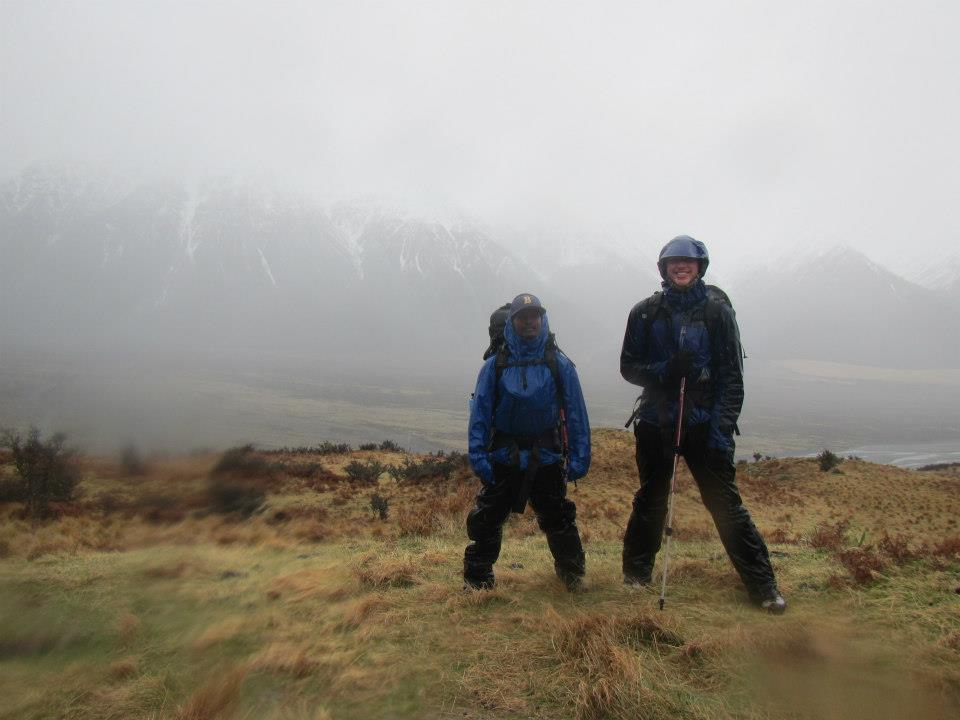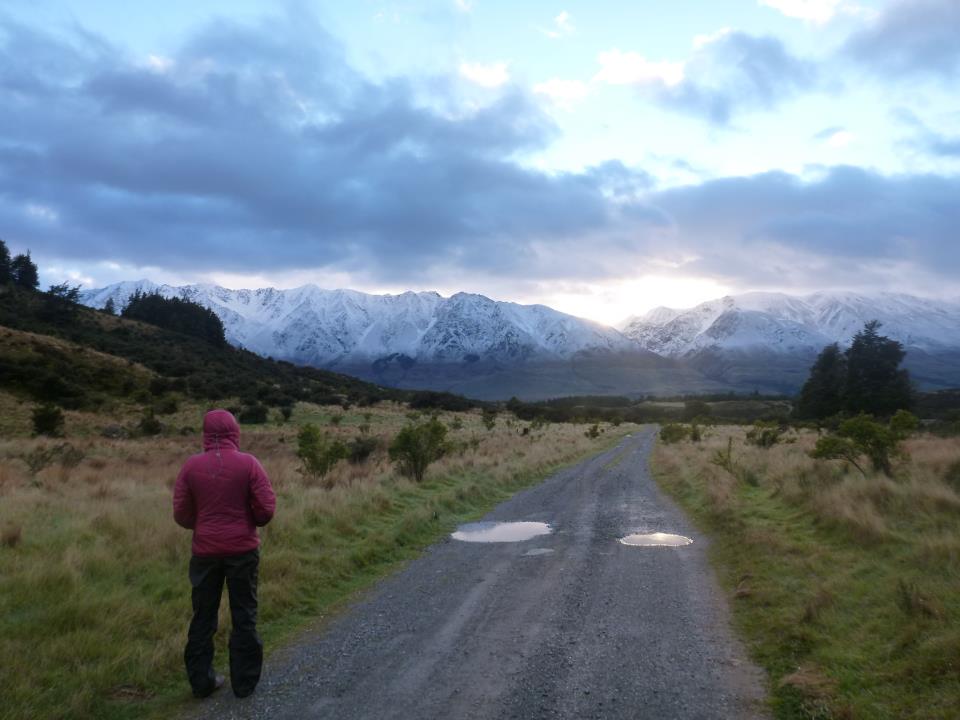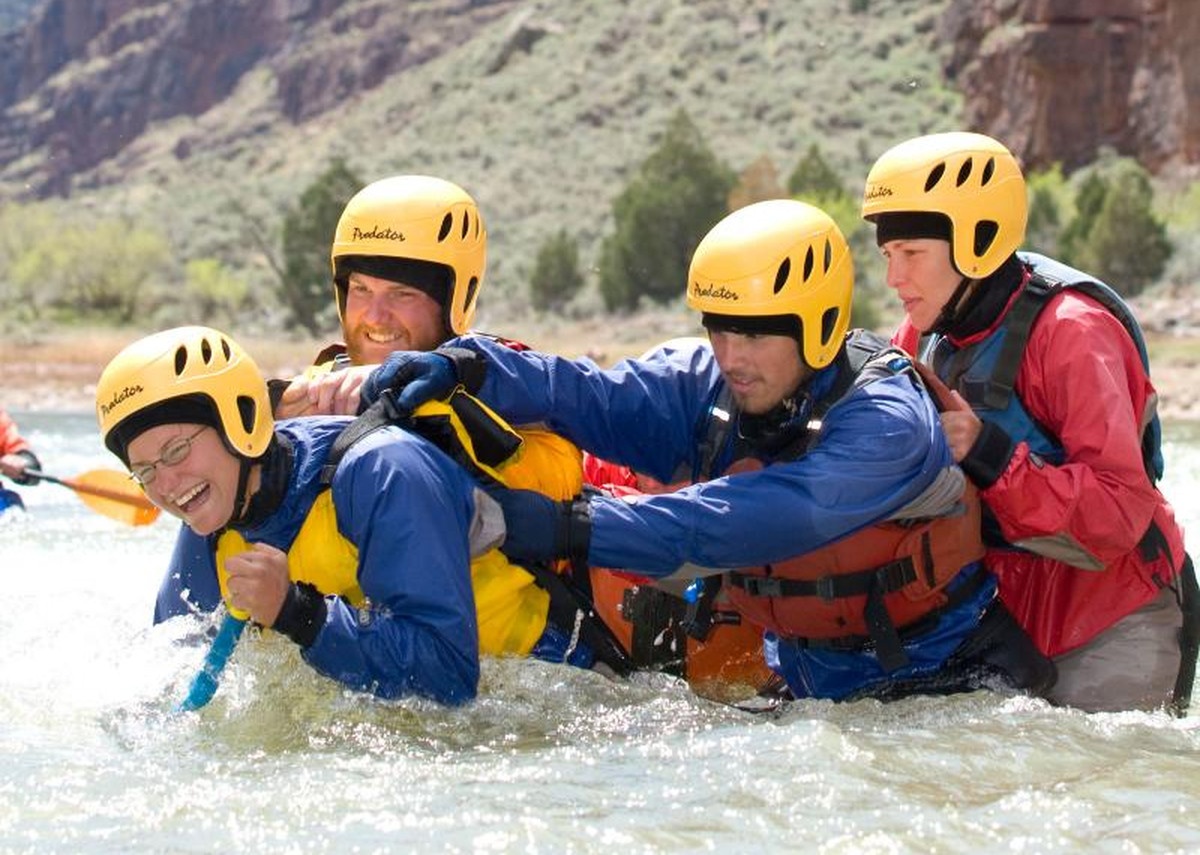
It was four in the morning, it was sideways sleeting, and the tent pole cup was broken. I stood huddled in my rain gear, aiming my headlamp down at my tentmate and my instructor, who were lying sideways on the icy snow, trying to speedy-stitch the stirrup back to the tent body before they lost all dexterity in their hands.
It was four in the morning and I was supposed to be snuggled up in my sleeping bag inside the tent, but instead I was outside getting pelted with rain on the side of a snowy mountain, the blackness around me increasing the sense of being in the absolute middle of nowhere.
It was at this particular moment that I began to question what the hell it was I was doing there, why someone would intentionally volunteer to put themselves into this kind of situation, and when we were going to be able to crawl back into the warm(ish) dry(ish) tent. The answers to the first two questions seemed uncertain, and the answer to the third was not until we had fixed the tent.
We had been out in the backcountry of New Zealand for over a month, and yet this was the first moment I’d experienced that had been such a forcible reminder of who the boss was out here.
If slanting, freezing rain and gigantic wind gusts hit your tent all night, no one was going to call it off. No one was going to spare you. No one was going to fix it for you while you rolled over and went back to sleep. You had to wake up, put on your rain pants and rain jacket and fix the tent yourself—lest you all be blown off the mountain when the tent poles snapped.
We had spent the hours leading up to the fateful tent-pole-cup disaster in a state of bleary-eyed flux between trying to fall back to sleep and snapping upright to brace the tent poles when a gust shot over the mountains and ripped its way through the valley we were camped in. The intensity of the volume of the wind shaking the tent and the pressure of the walls pushing down onto your shoulders and neck seemed almost too great to be believed. The pitifulness of the tent in the face of the power of the wind was so absurd it would eventually become funny, but for now, we just braced, lay back down, braced, laid back down, and braced, in bewildered, exhausted silence.
I told this story four years later while on my way to do a ten-mile ski tour in the Indian Peaks Wilderness in Colorado. I was driving with my friend Lindsay, who would be my partner for the Grand Traverse—a 40-mile overnight ski mountaineering race from Crested Butte to Aspen a few months later.
That day’s tour would be our first big training day for the race, and we were discussing all of the anticipated challenges. Food and water freezing, losing feeling in our hands when transitioning our setups from uphill to downhill mode, bonking, being in our boots for 15 hours—the list wound on longer than the road taking us into the mountains.
The Grand Traverse is your textbook sufferfest—a long, arduous journey in adverse conditions. Luckily, Lindsay and I were no strangers to sufferfests. She talked about summiting Mt. Katahdin, Maine’s tallest peak, in the winter when she was fifteen, and completing a Hut Traverse—a 24-hour, 49-mile speed hike connecting all the Appalachian Mountain Club’s high mountain huts with a whopping 17,000 feet of elevation gain. And when I dug back into my memory to rustle up the most grueling, miserable, interminable sufferfests I could think of—I realized that almost all of them had occurred on my 2012 NOLS semester in New Zealand.
My mind flashed to sea kayaking against a 3-knot current in the driving rain in the Marlborough Sound, putting on frozen boots morning after morning in the Arrowsmiths, tucking wet socks into my puffy coat at night to dry them out, staying up all night to prevent 120km/hour winds from ripping down the tent, spending four hours hacking out a glacier camp after postholing uphill all day.
There were so many moments during my three months in the wilderness when I was cold, wet, hungry, tired, frustrated, confused, in pain, and afraid. And in many cases more than one of those at once. Because those are inevitabilities of outdoor living. You are out in the elements and you will have to face them.
And yet I still count those three months among the best of my life.

My semester with NOLS taught me many things. How to light a stove, how to self-arrest with an ice axe, how to make a splint out of sticks or a trekking pole, how to triangulate your location with a map and compass—but most importantly, it taught me how to suffer well. How to feel cold, wet, hungry, tired, frustrated, confused, in pain, and afraid, and how to keep going. How to push through those things to accomplish the objective. How to take care of yourself to avoid feeling some of those ways if you could. How to take care of others in the same situation. How to somehow tuck yourself into your sleeping bag full of wet clothes at the end of a long day and smile despite all the reasons not to.
Because woven within the suffering were moments of grace so intense, so heart-blindingly incredible, that you would never stop coming back for more. Even when it hurt.

After the early wakeup call, the frozen boots, and the hours of postholing was the sunrise summit. When it was raining in your face and you were paddling as hard as you could against the current and you couldn’t see anything, it turned out the only thing to do was laugh at the absurdity of life. When the ultramarathon ended up being 36 miles instead of 32, tears of joy welled up in your chest when you rounded the last hill toward the finish line and realized you’d actually done it. And so it became clear that with that kind of suffering comes a singular kind of beauty.
As Lindsay and I trudged through the snow in single-digit weather, the wind howling in our faces, our fingers numb and our snacks frozen, I felt a strange sort of familiarity about it all. The cold, the hunger, the exhaustion. The small part of me asking why the hell I was out here.
I already knew how to do this. I already knew how to dig deep.
I already knew that only those who were willing to wade through the suffering with a smile in their hearts would see the splendor of the mountaintop.
NOLS has an entire leadership principle dedicated to handling these kinds of circumstances: Tolerance for Uncertainty and Adversity. And cultivating a talent for it will alter what you believe is possible. No matter how dark the night, or deep the snow. Your legs will get you there, if your mind believes they can.
Take time for your future on a NOLS semester.
[Editor's note: Post updated 11/19/2018]
- Leadership Skills
- Tolerance For Adversity & Uncertainty
- Tolerance For Adversity
- Study Abroad Stories
- Semester
- Nols New Zealand
- Outdoor Semester
- Stories
- Student Stories
- Alumni Accomplishments
- Leadership
Written By
Carolyn Highland
Carolyn Highland is a teacher and writer living in Truckee, California. When not taking her fourth grade students at Tahoe Expedition Academy (www.tahoeexpeditionacademy.org/) into the field, she can be found skiing, trail running, climbing, mountain biking, backpacking, jumping into alpine lakes, and then writing about it. Carolyn is a graduate of the 2012 NOLS Semester in New Zealand and the 2019 Rocky Mountain Outdoor Educator Course. You can follow her on Instagram at @c_highland



